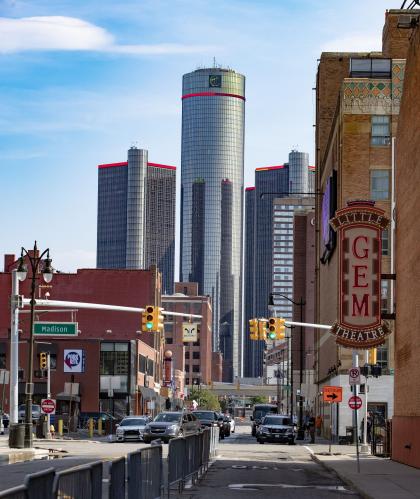How should a nation stimulate the economy when there’s no single U.S. economy, nor even 50 state economies, but instead a loosely linked network of 363 metropolitan economies, each composed of multiple, independent-minded towns and counties?
Well, for one thing it should invest in what matters to metros, and beyond that, it should provide to regions significant power and incentives to “put it all together” in a coherent way.
That’s the way to make the most of a stimulus push.
Which raises the $700 billion question: How did Congress and the Obama administration do this winter with the now-famous American Recovery and Reinvestment Act (ARRA), at $787 billion the biggest and boldest response to a national economic downturn in U.S. history?
The answer, based on an initial review of ARRA by our team at the Metropolitan Policy Program at the Brookings Institution, is a definite “fair to middling.” Sort through it carefully, and the legislation looks very much like a mixed bag of “business-as-usual–though punctuated with surprising new opportunities.”
ARRA was cobbled together hastily to address an economic emergency. Thus, the need to intervene quickly led the package’s designers to channel ARRA’s huge flow of funds largely through existing federal-state-local mechanisms, subject to existing laws and guidelines. Because current federal policy is generally neutral or hostile towards action at a metropolitan scale, ARRA is also.
And as a result, ARRA inhibits metropolitan creativity in implementation in three ways. First, it assigns a dominant role to states–which have an uneven record on metropolitan issues. Second, the package treats most of its investment streams as separate and distinct, and sends them to multiple actors at different levels of state-regional-local authority, which will complicate efforts at the metropolitan level to “put it all together” in service of integrated solutions. And third, ARRA’s welcome emphasis on transparency tilts too much toward curbing waste, fraud, and abuse–and too little on establishing a clear, sensible focus on measuring outcomes.
The result is a package that on balance represents more-of-the-same in the flawed run of federal policymaking.
And yet, despite its flaws, ARRA must be counted a boon to U.S. metro areas: It delivers billions of dollars of resources to state and local problem-solvers and affords some important opportunities to those leaders to make the most of it by coordinating its scattered flows.
On the resources side, we found that ARRA directs a whopping $335 billion–43 percent–of the total stimulus appropriation towards significant investments in the four key drivers of national and local prosperity that Brookings’ Blueprint for American Prosperity initiative notes are concentrate in metropolitan areas.
Regional leaders can in fact be delighted that, on balance, the stimulus package invests heavily in what matters: investments in federal R&D on clean energy; school reform and workforce training; transit and high-speed rail; affordable housing, neighborhood stabilization, and energy efficiency.
Such infusions at a time of plummeting growth represent an important boost.
Beyond that, ARRA holds out significant opportunities for creative metro leaders to engage in coordinated, regionalized problem solving that links and aligns the nation’s key assets in the places where they are concentrated–metropolitan areas.
A prime example: it includes $750 million for connecting workforce development to competitive industry sectors that could spur regional approaches to building high-value industry clusters, especially around energy efficiency and renewable energy.
Likewise, some $1.5 billion will fund competitive grants to support nationally, regionally, or metro-significant projects that may facilitate linking transportation, housing, energy, and environmental concerns.
And for that matter, ARRA provides $3.2 billion in tremendously flexible Energy Efficiency and Conservation Black Grants that look certain to catalyze scores of metro-scale strategies for reducing fossil fuel emissions and promoting energy efficiency in transportation, building, and other sectors.
In short, ARRA provides many important new resources to state, local, and metro leaders’ efforts to assemble the key drivers of regional prosperity; with good fortune that should spark some genuine efforts to foster high-quality governance and integrated implementation. But it makes only modest advance in recasting how the new federal assistance might best be bundled and aligned to serve the nation’s and metropolitan areas’ long-term recovery. Deeper reform remains a critical agenda for the future.
Creative players at the local, metro, and state levels should move aggressively to do what they can to link and align the stimulus package’s disparate programs to maximize their benefit–at home, and for the good of the nation.



Commentary
Op-edARRA on the Ground
April 2, 2009